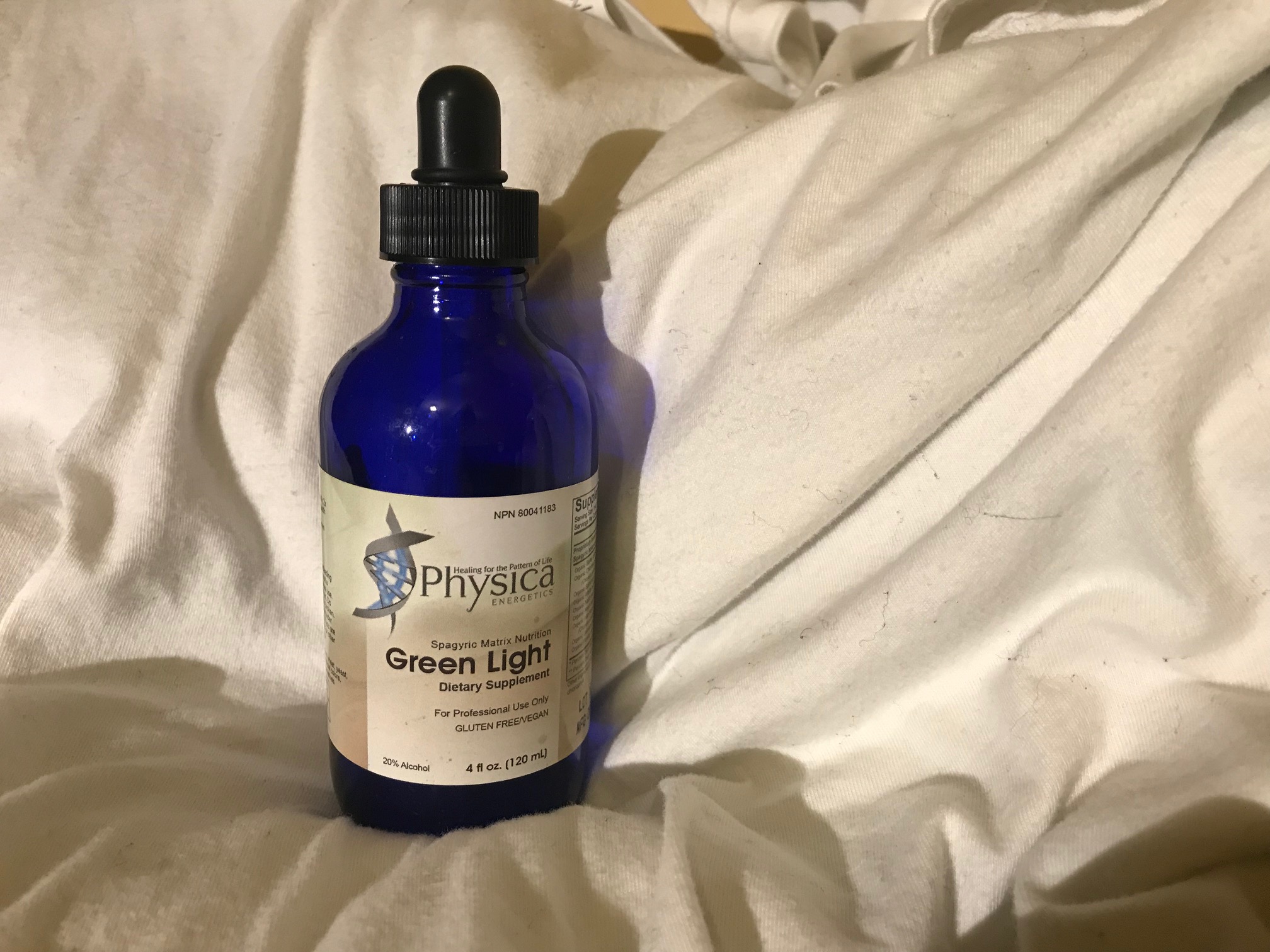Blue Glass 4 oz Bottle for Physica Green Light Supplement: Positive for Trace Cadmium (15 ppm) and Antimony (25 ppm)
For those new to this website:
Tamara Rubin is a multiple-federal-award-winning independent advocate for childhood Lead poisoning prevention and consumer goods safety, and a documentary filmmaker. She is also a mother of Lead-poisoned children (two of her sons were acutely Lead-poisoned in 2005). Since 2009, Tamara has been using XRF technology (a scientific method used by the U.S. Consumer Product Safety Commission) to test consumer goods for toxicants (specifically heavy metals — including Lead, Cadmium, Mercury, Antimony, and Arsenic). All test results reported on this website are science-based, accurate, and replicable. Items are tested multiple times to confirm the test results for each component tested. Tamara’s work was featured in Consumer Reports Magazine in February of 2023 (March 2023 print edition).
When tested with an XRF instrument, the glass bottle pictured here had the following readings.
Reading one: Side of blue glass bottle (tested on a section without the label for three Minutes)
- Barium (Ba): 2,531 +/- 147 ppm
- Chromium (Cr): 682 +/- 74 ppm
- Tin (Sn): 39 +/- 22 ppm
- Copper (Cu): 38 +/- 12 ppm
- Nickel (Ni): 39 +/- 12 ppm
- Iron (Fe): 568 +/- 37 ppm
- Bismuth (Bi): 10 +/- 4 ppm
Second reading of same component also included:
- Cadmium (Cd): 15 +/- 4 ppm
- Antimony (Sb): 25 +/- 10 ppm
Reading two: Rounded edge of the bottle near the top (a two minute reading)
Cadmium and Antimony levels were confirmed with multiple readings. These levels are considered low/ trace (a contaminant of the glass and not an ingredient added intentionally). As with the reading set above, levels this low may appear in some readings and not in other readings.
- Cadmium (Cd): 15 +/- 5 ppm
- Antimony (Sb): 27 +/- 11 ppm
- Tin (Sn): 24 +/- 9 ppm
- Iron (Fe): 993 +/- 106 ppm
- Vanadium (V): 950 +/- 46 ppm
- Titanium (Ti): 179 +/- 27 ppm
- Indium (In): 20 +/- 6 ppm
- Palladium (Pd): 7 +/- 3 ppm
- Silver (Ag): 8 +/- 3 ppm
- Cobalt (Co): 839 +/- 74 ppm
Reading three: Clear glass of the dropper
Tested for at least one minute (60 seconds)
- Barium (Ba): 5,371 +/- 198 ppm
- Iron (Fe): 356 +/- 141 ppm
- Vanadium (V): 2,943 +/- 145 ppm
- Titanium (Ti): 5.970 +/- 282 ppm
Reading four: Black hard plastic collar of the dropper
Tested for at least one minute (60 seconds)
- Barium (Ba): 370 +/- 117 ppm
- Bromine (Br): 14 +/- 3 ppm
- Zinc (Zn): 1,104 +/- 27 ppm
- Iron (Fe): 105 +/- 22 ppm
Reading five: Black rubber of the dropper
Tested for at least one minute (60 seconds)
- Barium (Ba): 293 +/- 60 ppm
- Selenium (Se): 25 +/- 14 ppm
- Bromine (Br): 22 +/- 5 ppm
- Zinc (Zn): 18,400 +/- 100 ppm
- Nickel (Ni): 7 +/- 4 ppm
- Iron (Fe): 417 +/- 17 ppm
- Bismuth (Bi): 9 +/- 4 ppm
- Titanium (Ti): 522 +/- 108 ppm
This level of Cadmium is considered safe by all standards. To my knowledge, no one has done any studies to determine if this level of Cadmium found in a glass bottle may (or may not) leach into the contents.
Regardless of whether or not it is a leaching concern, as Cadmium is a known carcinogen, I personally would like to see supplement companies making an effort to ensure the bottles that contain their products are free of toxicants like Lead, Antimony, and Cadmium.
As always, please let me know if you have any questions.
Thank you for reading and for sharing this work.
Tamara Rubin
#LeadSafeMama
Never Miss an Important Article Again!
Join our Email List










Are there safe heavy metals free bottles like this ?
I want to buy some empty ones, and to fill them with oil for my hands.
Stick with clear glass – as it is more likely to be lead-free.
T
Thank you.